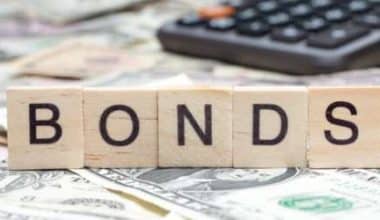Many new investors don’t know what a dividend is or how it works with an investment. Furthermore, whether it is a single stock or a mutual fund, a dividend is a part of a company’s profit that is given to stockholders who meet certain requirements. Most times, a public company does this. Further, in this article, we will discuss the meaning of dividend investing, how it works, its strategies, the cons of dividend investing, and dividend investing ETF.
Dividend Investing
This is a method for purchasing stocks of companies that pay cash dividends to their shareholders on a regular basis. Dividends can give you a steady stream of income from your investments in addition to any growth in the value of your stocks and other holdings. Dividends are money that a company gives to its shareholders. When you own a stock that pays dividends, you get a share of the company’s profits. dividend Investing can be a great way to make money. In the past, dividend stocks have done better than the S&P 500 and have been less volatile. That’s because dividend stocks offer two ways to make money: regular income from dividend payments and capital appreciation as the stock price goes up. Over time, this return can add up.
How Dividend Investing Works
A dividend is a payment that a company makes regularly to its shareholders. Many investors, especially new ones, are attracted to dividend investing because it doesn’t require much work on their part. You buy a stock and use the dividend payments to buy more shares. Dividend investments are attractive because the dividend payment alone is as high as or higher than the interest payments on Treasury bonds. A dividend-paying company’s shares can generate passive income for investors.
how dividend investing works, for example, while investing. Say you buy 100 shares of a company for $10 each, and each share pays an annual dividend of $0.50. If you put $1,000 into a stock, you would get $50 back in dividends over the course of a year. That works out to a 5% yield — not too shabby.
You can do whatever you want with your dividends. You can:
- Put the money back into the company to buy more shares.
- Buy shares of another company.
- Save your money.
- Use the cash.
Even if the stock price of the company goes up or down, you would still get those dividend payments as long as the company keeps giving them out.
Dividend Investing Strategies
Dividend investing is popular with many types of investors, but especially with older investors. This is because many older investors are looking for a steady stream of income to help pay for their retirement. Traders and investors devise various strategies to make more money while reducing risk because they could make more money simply by holding some stocks in their portfolios. Here are some of the best strategies for dividend investing.
#1. Long-Term Buy of Stocks
Strategies for dividend investing include buying stock in one or two good companies. Keep it for as long as possible, no matter how the stock price changes. Also, the stock price is not significant because no one knows what will happen in the future.
For example, we saw the stock price of Apple Inc. double in just one year. On the other hand, things may seem simple, but it’s not easy for investors to watch the market fall. Most of the time, they’ll just end up with losses.
Expert traders say that you should always be prepared for these kinds of losses. For example, Warren Buffet, states that it is often better to do nothing than to purchase and sell stocks. He tried to get us to see that it’s much better to spend time learning about companies and picking good stocks than to trade stocks without a plan. There are some strong intraday traders, but most people who buy and sell stocks can receive income from passive investments of free funds in stocks. The strategy is long-term, which is a major drawback. On the other hand, making money from future dividend payments is an advantage.
#2. Buying Stocks Before the Dividend Cut Day
As we’ve already said, when traders find out the size of the dividend after the shareholders’ meeting, their interest in the stocks grows, and strong buys push the stocks up. The stock price goes up more as the date of the dividend cut gets closer.
One of the strategies of dividend investing is to buy the stocks a long time before the cut, not just a few days before. Basically, the stocks should be bought right after the meeting of shareholders, before the prices go up too much. So, an investor can make money from both the dividends and the price growth of the stock. It’s important to remember that when we are players in the market, things don’t always go the way we want them to. That’s why we need to follow the rules of money management.
#3. Buying Stocks After the Dividend Payment
After dividends are paid out, the price of the stock usually goes down by the amount of the payment. At this point, we can think about buying stocks with the hope that their prices will keep going up. We shouldn’t expect dividends to generate income right away. Instead, we should wait for the next payment.
But if the stock price drops sharply after a dividend cut, we can buy it at a lower price than before, which will later allow us to profit from the fluctuations. It takes the stocks two to three months to get back to where they were before. In rare cases, they can return to where they were in just a few weeks or even days. A big advantage of this strategy is seeing stock price growth in the midterm. It’s odd that dividend payments don’t have much of an effect on stocks in the US market. With Apple Inc., we do not see serious drawdowns on the price chart. There are times like this, but you could say that when the market is going down for a long time, dividend payments just make it go down even more because sellers are forcing it down.
Cons of Dividend Investing
Dividend stocks have benefits that go beyond the allure of passive income. But, like any other investment, you should look into the cons of dividend investing before buying
#1. Twice the Taxation.
One of the cons of dividend investing is that you have to pay taxes twice on the money you get from them. The first requirement is that you pay taxes before you get your dividends. This is due to the fact that the company pays its net income as well as taxes on its annual earnings. This is the source of the dividends. The second taxation happens when you, as an investor, have to pay personal income tax on any dividends you earn in a given year.
Basically, this double taxation means that you have to pay taxes both as a part-owner of a company and as an individual.
#2. Adverse Effects of Dividend Policy Changes
The plan a company has for figuring out its dividend amounts and any possible increases based on future earnings is called its dividend policy. When a company that pays dividends makes changes to its policies, especially ones that lead to less or no payouts, the stock price of the company will go down. The clientele effect is a stock market theory that says the price of a stock is strongly linked to how investors react to changes in company policy. The cons of dividend investing entail that when these changes happen, many investors will buy or sell their company shares in response.
If a company has to cut its dividends for any reason, you risk losing not only your regular share income but also your accumulated share appreciation as other investors sell and move on to other stocks.
#3. High Dividend Payout Risks
When you invest in a company with a high dividend payout ratio, you take on some risk. The dividend payout ratio of a company’s stock shows how much of the company’s profits they give back to shareholders and how much is kept to pay down debt, invest in growth, or keep cash on hand. Determining the amount to pay out to shareholders can be a delicate balancing act for many companies. They want to attract and keep investors with high payouts, but they also need to keep enough of their earnings to support future growth and the ability to raise dividend amounts. When a company’s dividend payout ratio gets too high to be sustainable, the company may have to cut its dividends or stop paying them altogether.
Dividend Investing ETF
A dividend-investing ETF is an exchange-traded fund (ETF) that buys a group of stocks that pay dividends. They are exchange-traded funds that hold stocks with a strong history of paying dividends to their shareholders. When you buy a dividend-investing ETF, the fund managers make sure that the holdings are always good dividend-paying stocks.
The managers of a dividend investing ETF choose a portfolio of stocks that matches the stocks in a dividend index, just like they do with any other exchange-traded fund. The resulting portfolio gives the owners a cheap way to make money from their investments.
Dividend ETFs can be a more convenient way to invest for income than buying a basket of individual dividend stocks and managing them yourself. Dividend payments are never guaranteed, unlike coupon payments on bonds. This makes it harder for individual investors to keep track of a portfolio of dividend stocks.
How to Choose a Dividend Investing ETF
Morningstar has a list of more than 130 dividend-investing ETFs, so it’s important to know how to choose the best one for your portfolio. For example, the yield on two dividend funds might be the same. But you might like the ETF better because its dividends have grown faster in the past.
When picking a dividend-investing ETF, you should be aware of the following:
- Dividend yield. This is how much of the purchase price, was paid out in dividends over the past year. If an ETF worth $100 pays $10 in dividends, its dividend yield is 10%.
- Dividend growth. Even though a company pays a dividend now, that doesn’t mean it will always do so. Even if the dividend stays the same, there is no guarantee that payouts will go up over time. Some investors like to buy so-called dividend aristocrats because of this. The dividends of S&P 500 companies have been going up for a long time.
- Quality of dividends. This is true for the quality and safety of the stocks that the ETF owns. If the fund invests in riskier companies with lower credit ratings, the value of the fund is more likely to go down, and your total return will go down with it. As a general guideline. Avoid funds that invest in riskier companies to get higher returns.
“How Do Beginners Invest in Dividends?
Most new investors learn right away that dividend stocks are a great option. Dividend stocks are usually seen as a safer choice than growth stocks or other stocks that don’t pay a dividend. Even the portfolios of new investors usually have a few dividend stocks.
Can You Get Rich Dividend Investing?
A $1 million dividend portfolio takes between 20 and 30 years to build up. Yes. It can be done more quickly. But to do that, you will need to save and invest dividends very quickly.
Is Dividend Investing Better Than Growth?
Investing in dividend stocks rather than growth firms would probably result in a smaller loss if you believe the market is about to enter a bear market. Compared to growing companies, dividend-paying corporations often have better balance sheets, stronger cash flow, and more tenable business strategies.
How Long Do You Need to Hold a Stock to Get Dividends?
You must have had those shares of stock unhedged for at least 61 of the 121 days that started 60 days before the ex-dividend date. The securities must be held for 91 days out of the 181 days starting 90 days prior to the ex-dividend date for specific preferred stock.
How Much Should I Invest to Get Dividends?
Now, you don’t have to put in a certain amount of money to get dividends. It all depends on the yield of your investments, so it’s pretty important to understand “yield” if you want to invest in dividends. (Note that the definition below shows how “yield” is used when talking about dividends from stocks.
Should I Invest in Dividend Stocks as a Beginner?”
Dividend-paying stocks can be a great way to boost your income and help your portfolio grow, no matter what stage of life you’re in. Just make sure that before you invest, you look into the companies’ overall financial health and not just their dividend rates.






